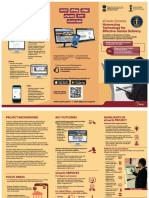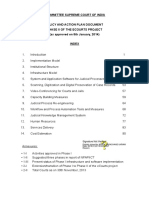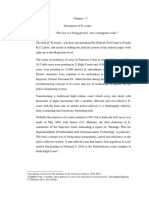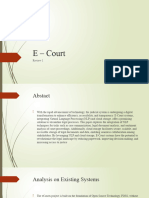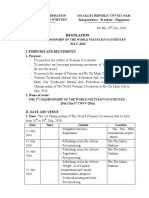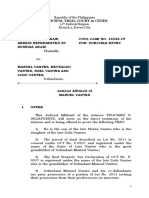0% found this document useful (0 votes)
58 views21 pagesA Brief History of Ecourts
The e-Courts project in India aims to enhance the efficiency and accessibility of the judicial system through ICT enablement, providing services like e-Filing, SMS notifications, and a National Judicial Data Grid. Implemented across all District and High Courts, it emphasizes citizen-centric service delivery and transparency in case management. The project integrates various platforms, including mobile applications and virtual courts, to streamline judicial processes and improve overall productivity.
Uploaded by
dcpracomputerCopyright
© © All Rights Reserved
We take content rights seriously. If you suspect this is your content, claim it here.
Available Formats
Download as PDF, TXT or read online on Scribd
0% found this document useful (0 votes)
58 views21 pagesA Brief History of Ecourts
The e-Courts project in India aims to enhance the efficiency and accessibility of the judicial system through ICT enablement, providing services like e-Filing, SMS notifications, and a National Judicial Data Grid. Implemented across all District and High Courts, it emphasizes citizen-centric service delivery and transparency in case management. The project integrates various platforms, including mobile applications and virtual courts, to streamline judicial processes and improve overall productivity.
Uploaded by
dcpracomputerCopyright
© © All Rights Reserved
We take content rights seriously. If you suspect this is your content, claim it here.
Available Formats
Download as PDF, TXT or read online on Scribd
/ 21
